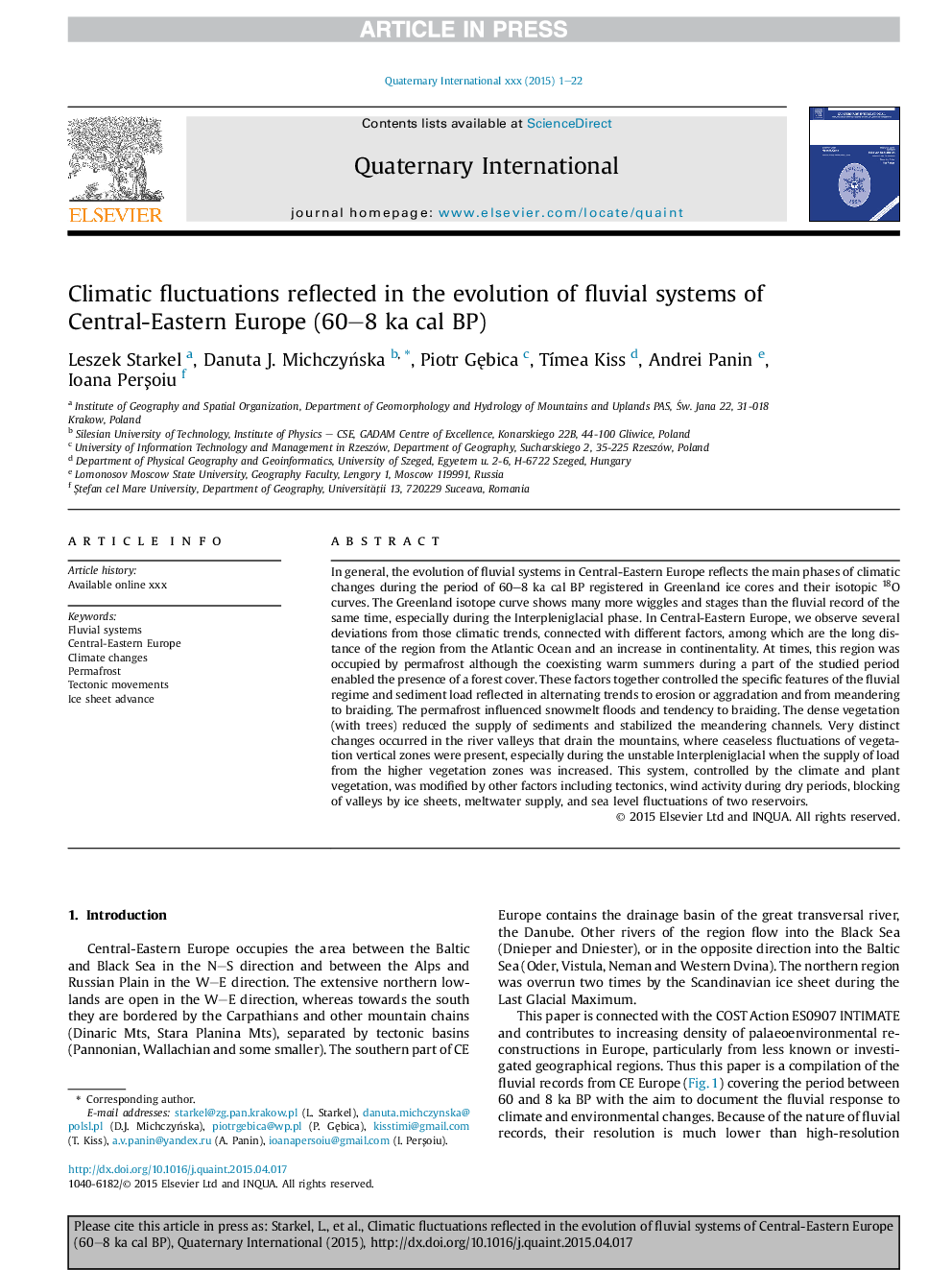| Article ID | Journal | Published Year | Pages | File Type |
|---|---|---|---|---|
| 7451408 | Quaternary International | 2015 | 22 Pages |
Abstract
In general, the evolution of fluvial systems in Central-Eastern Europe reflects the main phases of climatic changes during the period of 60-8Â ka cal BP registered in Greenland ice cores and their isotopic 18O curves. The Greenland isotope curve shows many more wiggles and stages than the fluvial record of the same time, especially during the Interpleniglacial phase. In Central-Eastern Europe, we observe several deviations from those climatic trends, connected with different factors, among which are the long distance of the region from the Atlantic Ocean and an increase in continentality. At times, this region was occupied by permafrost although the coexisting warm summers during a part of the studied period enabled the presence of a forest cover. These factors together controlled the specific features of the fluvial regime and sediment load reflected in alternating trends to erosion or aggradation and from meandering to braiding. The permafrost influenced snowmelt floods and tendency to braiding. The dense vegetation (with trees) reduced the supply of sediments and stabilized the meandering channels. Very distinct changes occurred in the river valleys that drain the mountains, where ceaseless fluctuations of vegetation vertical zones were present, especially during the unstable Interpleniglacial when the supply of load from the higher vegetation zones was increased. This system, controlled by the climate and plant vegetation, was modified by other factors including tectonics, wind activity during dry periods, blocking of valleys by ice sheets, meltwater supply, and sea level fluctuations of two reservoirs.
Related Topics
Physical Sciences and Engineering
Earth and Planetary Sciences
Geology
Authors
Leszek Starkel, Danuta J. MichczyÅska, Piotr GÄbica, TÃmea Kiss, Andrei Panin, Ioana PerÅoiu,
